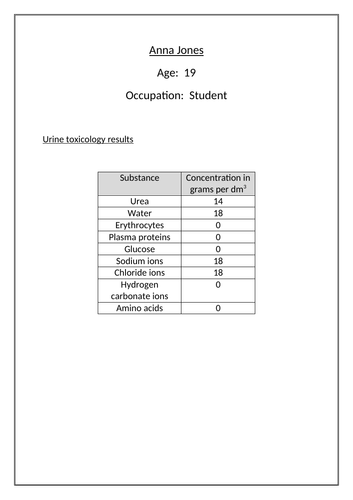











This is a fully-resourced lesson that covers the details of specification point 5.1.2 (e) of the OCR A-level Biology A specification which states that students should be able to demonstrate and apply an understanding of the effects of kidney failure and its potential treatments. This lesson consists of an engaging PowerPoint (55 slides) and associated differentiated worksheets that look at the diagnosis of a number of different kidney-related conditions and the potential treatments for kidney failure. This lesson is designed to get the students to take on the numerous roles of a doctor who works in the renal ward which include testing, diagnosis and treatment. Having obtained measurements by GFR and results by taking urine samples, hey are challenged to use their knowledge of the function of the kidney to study urine samples (and the accompanying GP’s notes) to diagnose one of four conditions. They then have to write a letter to the patient to explain how they made this diagnosis, again focusing on their knowledge of the structure and functions of the Bowman’s capsule and PCT. The rest of the lesson focuses on haemodialysis, peritoneal dialysis and kidney transplant. There are regular progress checks throughout the lesson so that students can assess their understanding and there are a number of homework activities included in the lesson.
This lesson is designed for A-level students who are studying the OCR A-level Biology specification and ties in nicely with the other uploaded lessons on this organ which include the structure and function of the nephron, ultrafiltration, selective reabsorption and osmoregulation.
Something went wrong, please try again later.
This resource hasn't been reviewed yet
To ensure quality for our reviews, only customers who have purchased this resource can review it
Report this resourceto let us know if it violates our terms and conditions.
Our customer service team will review your report and will be in touch.